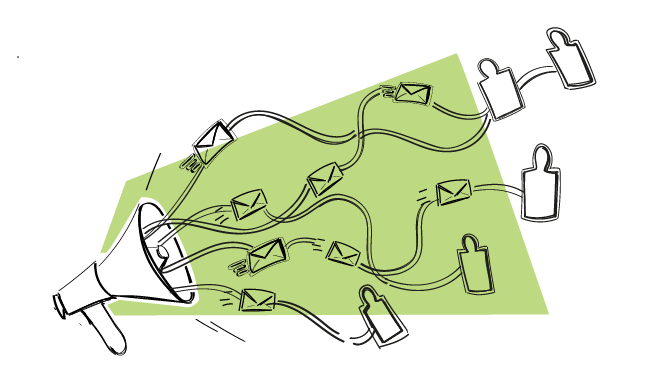If you’re a salesperson for a SaaS company, you know very well how many leads try your product every month but don’t become customers.
I asked SaaS onboarding specialist Aaron Krall to share his insights on how to reignite conversations with leads who didn’t convert, and added them to the ebook I wrote – How to Grow SaaS with Email. Today I’d like to share the chapter on our blog.
So let’s see how to use email to re-engage lost leads.
How to bring back those who didn’t convert?
Lost leads – the ones who took your product for a run, but decided not to go through with it when the trial ended – are often a neglected audience in SaaS businesses.
But when your trial users don’t convert, don’t abandon hope yet, all of you who offer free trials. There’s still a chance to bring them back.
How?
Duh – with email.
How do you know which leads are worth reigniting the conversation with?
Let’s first take a look at the list.
Do you just send a campaign to all of those who didn’t convert? Or do you single out a specific group, e.g. those who were more invested?
As SaaS user onboarding specialist Aaron Krall says, it depends on how big the list is and on the customer value.
If you’ve got, let’s say, 100,000 expired trials, there’s no way to analyze at scale each and every lead to figure out why they cancelled or how interested they were. So what’s crucial here is to segment the leads in some way — when you reach out to them, you’ll be able to speak to their specific pain points and needs.
This will mean re-engaging them in their unique pain language, as opposed to one general email blast to everyone.
What to put in the re-engaging emails?
When you’re reaching out to people who – for whatever reason – decided not to upgrade to a paid plan, you need to step up your game. Take out the big guns.
What should you put in the opening email?
- reintroduce yourself and offer the prospects’ some context – remind them who you are and what your tool does
- tell them how come you’ve got their email address
- focus on providing them value, not selling – offer to share a valuable piece of content or information on a topic you believe they’d be interested in
- give them a way to opt-out – this might actually nudge them to respond
Or you might reach out to them after you’ve rolled out a new important feature, letting them know that your product has changed.
Aaron’s approach here is to run a troubleshooting campaign to find out the reason the leads didn’t move on to a paid plan.
This campaign should be super simple, fun and engaging for the user. It’s really hard to get feedback from a user once the trial is over and they didn’t convert, so you’ve got to have fun with that initial troubleshooting email.
After this, his strategy involves breaking up the emails into 5 different categories and sending at least 2 messages a month.
According to Aaron, one category which is mostly overlooked is “objections”.
Usually someone didn’t buy because of an objection (assuming they’re the right fit), so addressing these objections in addition to showing prospects how your tool can solve their problems and make their life easier is what will bring them back into the tool.
One thing that might entice them to re-try is offering to extend the trial, creating very little risk to come back.
This sequence goes on until the prospect unsubscribes, signs up for the trial again, or doesn’t open any of the emails — in which case it’s best to remove them from the list to maintain a high deliverability rate.
Note: Remember that you can’t keep prospects’ data in your files forever, though.
Although personal data acts, such as GDPR, don’t state precisely for how long it is OK to store it, you need to have a very good and specific reason for doing so.
Here’s how an opening email in a lost lead re-engagement sequence could look like:
Hey {{First_Name}}, Sarah from (your company) here. It’s been a couple months since you tested (your product). How are things going over at {{Company}}? Did you manage to (solve the problem they were having) yet? If so, I’d really like to hear what solution worked for you! We’ve been working full-blast for the past months, too, and I’m super excited to share that we’ve just rolled a new feature — {{Feature}} — that can help with (specific pain point of theirs). Interested in trying it out in a free 14-day trial? Best, Sarah
Or:
Hey there, {{First_Name}}! A while ago you signed up for (your product), but decided not to stick around after the trial. Would you mind sharing what was the reason behind this? Hope to hear from you! Best, Sarah PS If you’d rather not hear from me ever again, just reply with a 3) 🙂
It’s worth it to give it a shot – might turn out that lost leads aren’t lost after all.

